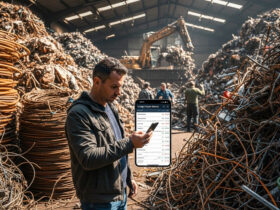In the realm of do-it-yourself DIY tasks and home improvement precipitated by our intuitive human nature of creating and modifying, have you ever encountered an odd-looking contraption named a ‘nibbler’? Or perhaps, you’ve been engrossed in a project where a regular cutter couldn’t serve justice to your metal sheeting work? If so, the nibbler could be the perfect solution for your predicament. In this discourse, we’re going to delve into the essence of the infamous nibbler tool and more importantly, the safety measures associated with using it.
Often overlooked in the tool world, a nibbler can neatly cut sheet metals without distortions or deformations that are common with other tools. But like any other handy tool, operating it could pose safety risks if not done correctly. Can you guess what these risks could be? Incorrect handling, not adhering to safety guidelines or even being complacent can lead to injuries. Throughout this post, we will guide you on maximizing your nibbler operation while prioritizing safety.
Understanding the importance of safety measures in operating a nibbler isn’t just about knowing what to do. It’s about creating an environment where safety takes precedence, and efficient nibbler operation naturally follows. So, let’s begin our journey of exploring the nibbler, it’s ins and outs, as well as how to use them safely and effectively.
Nibbling into the Basics: What is a Nibbler?
To start, let’s demystify the tool’s identity first. A nibbler, despite its cute name, is a rigorous power tool used primarily for cutting sheet metal with minimal distortion. It functions by a ‘nibbling’ action- making a series of small cuts to incise metals like tin, aluminum, and even steel.
While it’s true that nibblers are not as prevalent as other tools in a conventional toolbox, they fill in a niche role impeccably. Especially in projects where clean, distortion-free cuts in sheet metal are the need of the hour, nibblers shine.
Safety First: Why Emphasize Safety Measures?
Like any power tool, a nibbler can pose safety risks if not used appropriately. Misuse could lead to injuries, tool damage, or imperfect cuts. Adhering to safety protocol ensures that the nibbler performs optimally and simultaneously guarantees your safety.
Gear Up: What Safety Equipment is Required?
When operating a nibbler, it’s essential to wear the appropriate safety gear. This includes cut-resistant gloves, safety goggles to protect your eyes from metal shards, and a dust mask to prevent inhalation of metal dust.
Nibbler Operation: How Does One Safely Operate a Nibbler?
Operating a nibbler requires distinct knowledge and an intuitive set of hands. As you begin, ensure to support and secure the metal sheet to avoid slippage. Then, while dealing with long curves or straight lines, keep the nibblers cutting-edge perpendicular to the work surface.
Pros and Cons of Nibbler Use
Like all tools, nibblers come with their own set of pros and cons. They are known for precise, distortion-free cuts and are easy to operate. However, they can be noisy and produce a significant amount of waste.
Safety is Never Too Much: Additional Safety Precautions
Beyond the basic measures, additional precautions can be taken. This includes regular maintenance checks on the nibbler, ensuring a systematic workflow to avoid accidents, and finally, always keeping the work area clean and clear of hazards.
Conclusion:
Exploring the realm of home improvement and DIY projects with a nibbler can be an exciting journey. However, as we dive into the world of sheet cuts and nibbles, safety should never be compromised. Equipped with knowledge, the right gear, and a nibbler, any sheet metal task can be conquered. Remember, safety isn’t just about rules to follow; it’s the journey to achieving your DIY project while fostering a safe environment. Safety complements efficiency, and with that notion, we conclude our exploration on the safety measures in operating a nibbler. Happy Nibbling!










Find Us on Socials